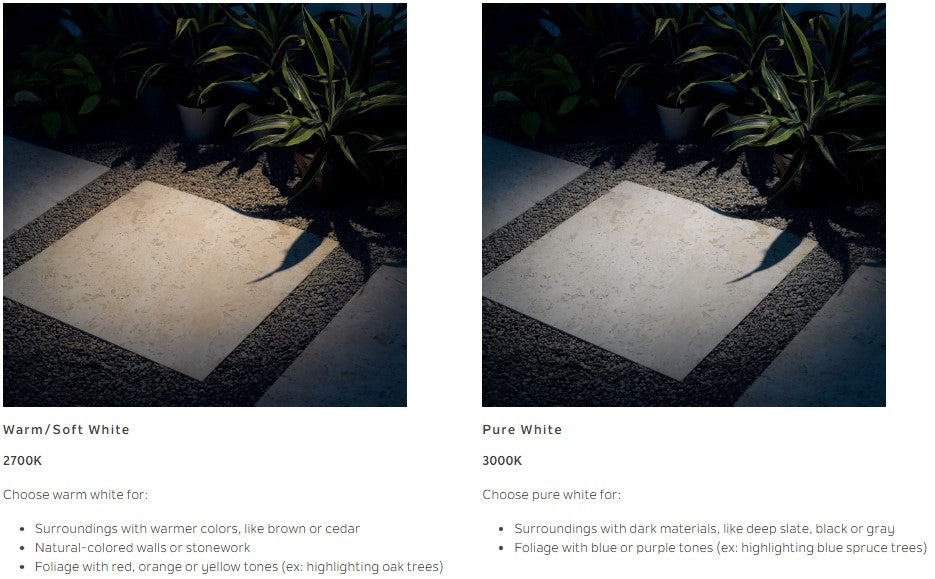
Understanding Color Temperature and Beam Spreads. What's Their Significance for Your Landscape Lighting
When it comes to landscape lighting, the color temperature of the light source can have a significant impact on the overall look and feel of your outdoor space.
Color temperature is a measurement of the perceived color of a light source, expressed in units of Kelvin (K). It is used to describe the warmth or coolness of the light emitted by a source, and is an important consideration in many applications, including lighting design.

In lighting design, color temperature is used to select the appropriate light source for a given application. Warmer color temperatures, around 2700K to 3000K, are typically used for residential and hospitality applications, as they create a cozy, welcoming atmosphere. Cooler color temperatures, around 4000K to 5000K, are often used in commercial and industrial applications, as they provide a brighter, more efficient light, but recently the industry is seeing trends toward 4000K. Additionally 5700K mimics moon light when used as a downlight from trees.
Here are some common color temperature ranges used in landscape lighting:
-
2200K: This is considered a very warm color temperature and produces a yellow-orange light. It is often used to create a cozy and intimate atmosphere in outdoor living areas like patios or decks. It can also be used to highlight certain landscape features, like stone or brick walls, to create a warm and welcoming glow.
-
2700K: This is a warm color temperature that produces a soft, yellowish-white light. It is often used in outdoor lighting to create a relaxing and inviting ambiance. It is also a popular choice for highlighting trees and other natural features in your landscape.
-
3000K: This is a neutral white color temperature that produces a clean, bright light. It is often used for more functional lighting purposes, such as illuminating walkways or outdoor work areas. It can also be used to highlight architectural features, like columns or pillars, for a sleek and modern look.

The next factor you may consider is the beam spread. It can vary depending on the type of light fixture and the angle of the beam.
Narrow beam spread:

Medium beam spread:

A medium beam spread of around 30-60 degrees is often used for task lighting to illuminate specific areas of your outdoor space, such as a patio or walkway. This type of lighting provides a good balance of coverage and intensity.
Wide beam spread:

A wide beam spread of around 60-120 degrees is often used for ambient lighting to create a warm and inviting atmosphere throughout your outdoor space. This type of lighting provides a more diffuse and even coverage.
The right color temperature and beam spread can help you achieve the desired ambiance and mood for your outdoor space, while the wrong color temperature can create a harsh or uninviting environment. A professional lighting designer can help you choose the right color temperature and create a customized lighting plan to enhance your landscape and create the desired effect.
FAQ:
Q. What is the difference between Lumens and Watts? How does the affect the color temperature?
A. Lumens measure the brightness of a light source while watts measure its power consumption. Color temperature refers to the appearance of the light emitted, and is measured in Kelvins. While lumens and watts do not directly affect color temperature, the type of light source used can affect the color temperature of the light emitted.
Related Articles:
Getting started with a Landscape Lighting Project
RGBW Color Changing MR16 Options For Landscape Lighting
What are the variations between different types of LED lamps?

Leave a comment